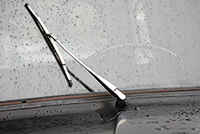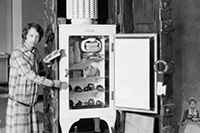Technology you had no idea was invented by women
The brave and unimaginable efforts of Women Entrepreneurship have led to some of the greatest technological breakthroughs and inventions that mankind has ever witnessed. We tell you all!

We live in a world surrounded by technology. A marvel of human ingenuity that has strived to make our life more comfortable than ever before – whether it’s by the way we travel, work, access information or communicate. Technology has refined, rejigged and revolutionised the way we live our life. And we just can’t imagine a life where we’d be comfortable living in a world devoid of our digital distractions and dependencies.
 Survey
SurveyImagine this scenario: You’re living in a well-to-do household, where not only are your basic needs taken care of, but you also have money to spend on digital accompaniments to improve your standard of living – you know, things like a refrigerator, washing machine, microwave oven, electric kettle and other essentials. Then there are things such as your car, gaming console, television, laptop and other digital paraphernalia that surrounds us, adding another level of satisfaction and fulfillment altogether. Where would we be without our digital dimensions?
Technology has seeped into every facet of our life. When you come to this realisation, this revelation that technology is far more ubiquitous than you’d care to stop and think about, the next question that begs to be answered is, well, who invented some of the technological marvels that we take for granted in the 21st century? Scientists, engineers, pioneers and mavericks they all were, but who were they?
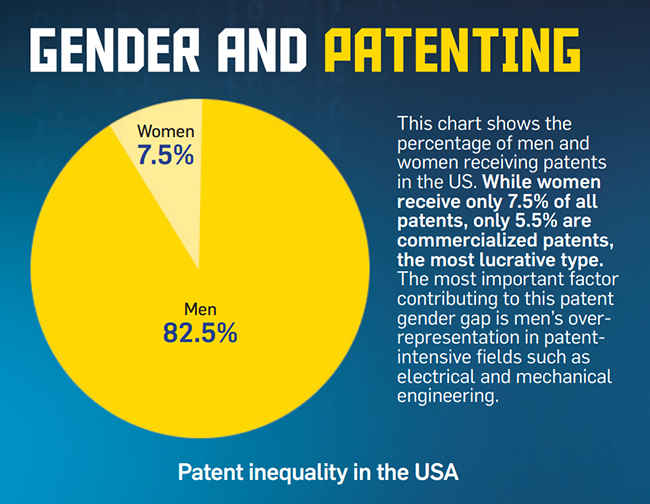
In response to that question, it wouldn’t be surprising to get answers such as Thomas Edison, Nikola Tesla, Alexander Graham Bell, Benjamin Franklin, Charles Babbage or even modern mavericks like Steve Jobs, Bill Gates, Larry Ellison and Elon Musk. And you won’t be wrong to jump to those conclusions either. But, therein lies the tragedy of the situation.
Nine out of ten times it’s always the men of tech breakthroughs and innovations who are remembered, never the women – despite their equally noble and path-breaking technological breakthroughs – which are seldom remembered in the first breath. That’s a sad state of affairs right there. It would be a complete fallacy to assume that women innovators, technologists and pioneers didn’t take as much effort to further the pace of technological breakthroughs and innovations as their male counterparts. Women are no less competent than men when it comes to holding their own in the arena of invention and ingenuity. We kid you not.
You want proof? Here it comes in all its shining glory!
First programmer ever!
We all regard Charles Babbage as the Father of Computing for conceiving the idea of a computer back in the early 1800s. However, his dream of an Analytical Engine would have taken a very different turn and fight shy of advancing into a modern computer if it wasn’t for the efforts of Ada Lovelace – one of Babbage’s closest friends and a brilliant mathematician in her own right.
Ada Lovelace is widely regarded as the world’s first programmer and a rare visionary. Her most seminal work was done when she translated Charles Babbage’s paper on analytical engines that was written by an Italian engineer for a Swiss journal back in 1842. Over a nine-month period, while translating the article, Ada ended up adding her own notes and thoughts on what the engine should do. It exceeded the original piece three times over, having also written a way (program) in which the engine could be used to predict a complex mathematical number sequence. She steered the direction of the Analytical Engine towards concepts that would ultimately evolve it into the general purpose computer that was built in the 20th century.
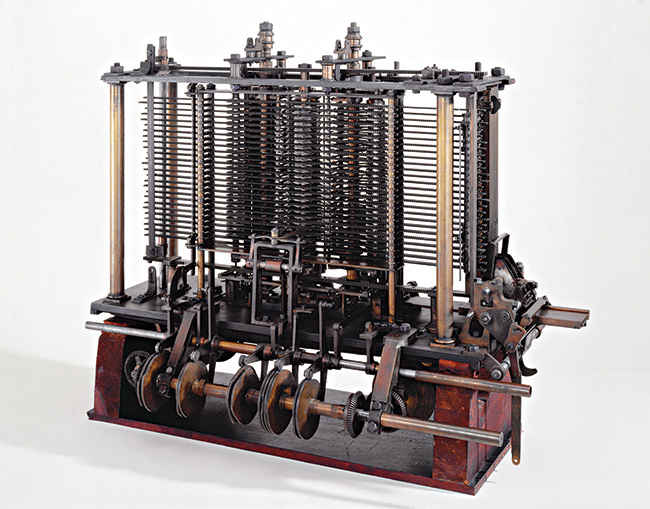
The first general purpose computer
She introduced the concepts of looping programs and laid down the principles that guided the way letters and symbols could be recognised by future engines with the help of codes (kind of like the conception of ASCII or Unicode). She also envisioned that future machines would be used for more than just mathematical calculations and increasingly for other areas of human interest like listening to music (no jokes!) and personalisation of computers.
This Enchantress of Numbers, as Babbage used to call Ada, died at the young age of 37, but still managed to leave a lasting impression on the course of computing in its infancy.
Queen of Computing
In the world of computers, if you have to write code and programs in any language, you can’t do it without a compiler to help execute it. Compiling a piece of code is, in fact, an essential, fundamental prerequisite to programming and developing rich, complex software. Come to think of it, without compilers the world of computer science would have been at a severe disadvantage, if it weren’t for the efforts of a genius named Grace Hopper.
Before joining the US Navy, Admiral Grace Hopper earned a PhD in Mathematics from Yale University as far back as 1934, becoming one of the first women to earn that distinction. During the WWII, Lieutenant Hopper was “tasked with developing a machine [at Harvard] that could make fast, scientific calculations to understand such war-time things as the trajectories of warheads.” Her pioneering work birthed one of the first digital computers at that time.
Using FLOW-MATIC, a programming language she designed, Admiral Hopper and her staff were able to make the UNIVAC I and II “understand” twenty statements in English. This was epic at the time because early computers understood English as gibberish, making it nigh impossible for researchers to code in a familiar language. After three years of hard work and perseverance, Hopper published her first compiler paper in 1952. If it were not for her leading effort, COBOL couldn’t have been conceived or standardised back in 1959. Every present-day coder and programmer, and in fact anyone involved in any software development role, should tip their hats to Grace Hopper’s efforts back in the very infancy of the computing era.
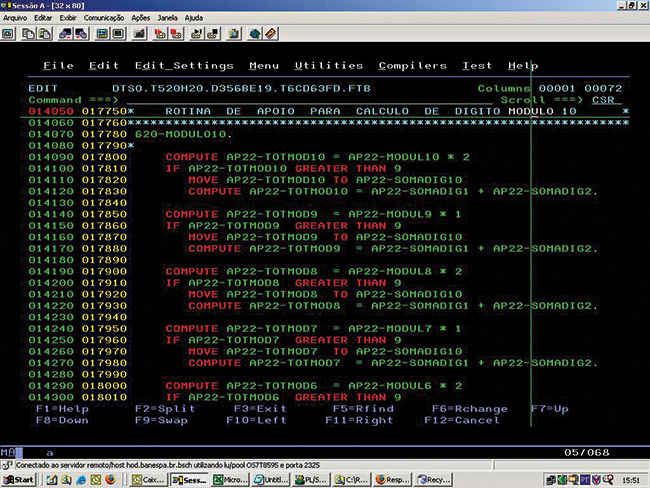
COBOL wouldn’t have become what is has hadn’t it been for Grace Hopper
Mother of the Internet
When it comes to the origins of the Internet, we’ve all heard of Tim Berners-Lee and Vint Cerf, but not many of us have heard of Radia Perlman. They call her the Mother of the Internet, and even though Radia Perlman despises the term we think it’s very well justified, as she played an important role in ensuring the Internet worked seamlessly.
A PhD in Computer Science from MIT, Perlman was the first person to solve the problem of file sharing between two computers by her breakthrough ‘spanning tree protocol algorithm’ or ‘STP’ in 1985, which was quickly adopted as the de facto standard for network bridging. She also created a computer terminal to handle traffic to and from massive interconnected networks. Radia made significant contributions towards the early advancement of the Internet and has over 80 patents in her name as a testimony of her ground-breaking work.
Without Perlman, we wouldn’t have been able to share files or data connection packets over the rapidly expanding Internet in its early days. You didn’t know that now, did you?

You can thank Radia Perlman for this
Wireless wondergirl
Hedy Lamarr is credited with co-inventing a piece of technology that’s still in use in mobile phone towers and Bluetooth and Wi-Fi networks to this day. Born in Austria, Lamarr went on to become a Hollywood heartthrob before altering the course of wireless technology forever during World War II. How she ended up becoming a pioneer of a critical method of wireless data transmission isn’t unlike a Hollywood flick in its own right.
In a conversation with inventor, author and composer, George Antheil in Los Angeles, from whom Lamarr was seeking tips on improving her figure, radio-controlled torpedoes somehow turned into a topic of discussion. Why? It seems Lamarr was somewhat of an expert on torpedoes due to meetings she attended with her former husband, and this is how she ended up collaborating with Antheil on frequency hopping, a technique used for rapidly switching between a number of frequencies in a synchronised manner. They patented their secret wireless communication technology in 1942, but it wasn’t until after the war in the 1950s that Lamarr’s co-invention resurfaced and became a cornerstone of private telecom operators’ radio communication infrastructure.
Titan of telephony
Dr. Erna Hoover, an American mathematician born in 1926, is credited with creating a major impact on modern communication technology through computer software. All this at a time when computers were still getting off their blocks.
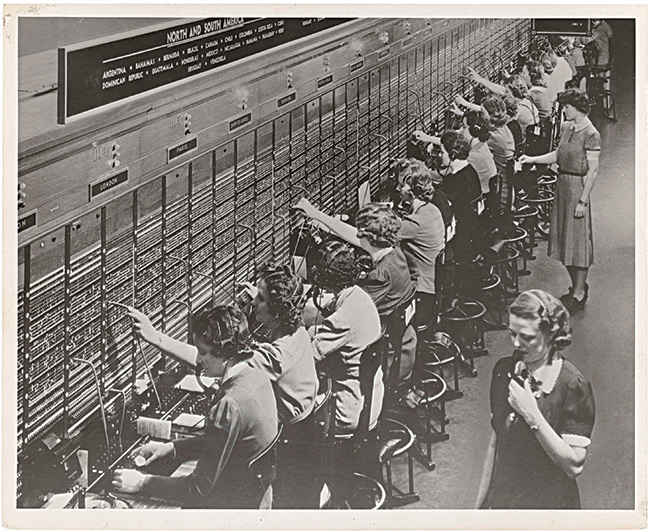
Modern telephony owes a lot to Dr. Erna Hoover
While working at Bell Labs, Hoover devised an ingenious solution to tackle the volume of incoming telephone calls being received there. The solution required her to invent a computing method to handle telephone call switching instead of the hard-wired, mechanical switcher in use at the time. Her method took incoming call prioritisation efficiency to a never-before-imagined, unprecedented level – especially for calls during peak load times – allowing for a smooth, intelligent call switching process. And legend has it that Dr. Hoover came up with this innovative solution to the call-switching problem while giving birth to one of her three daughters in a hospital!
Dr. Hoover further has the distinction of being awarded one of the first computer software patents ever handed out to an inventor, male or female. It is no surprise then that her name is mentioned in the same breath as other revolutionary pioneers of computer technology.
| To infinity and beyond! |
|---|
| Pioneering women haven’t just shone a bright light in computing or information technology alone. Take a look at the following inventions, all of which come down to the efforts of enterprising females |
|
|
|
|
|
|
|
|
|
|
Mother of object-oriented programming
As one of the first women to earn a PhD in computer science, Barbara Liskov has been a significant contributor in the world of computing innovations. Her path-breaking work paved the way for modern object-oriented programming (OOP) languages, which is an epic feat indeed.
How did Liskov help create OOP? By inventing what’s known as the CLU, an early programming language that helped lay the foundation stone for object-oriented programming back when software engineers didn’t exist. She also developed Argus, a programming language – largely an extension of the original CLU, that was meant for distributed program executions across multiple computers on a network (today’s distributed computing). Liskov also created an object-oriented database system called ‘Thor’.
If it weren’t for Liskov’s rare genius and her crucial advances in object-oriented programming, the computing world would’ve been deprived of concepts that led to a smorgasbord of modern OOP-based languages and operating systems, such as Java, Objective-C, C++, Visual Basic.NET and Mac OS X, among others. In 2008, Liskov was bestowed with the Turing Award for “contributions to practical and theoretical foundations of programming language and system design, especially related to data abstraction, fault tolerance and distributed computing.” Well deserved!
Diva of gaming
The world of computer games would’ve been fairly desolate and mundane if it weren’t for the efforts of Roberta Williams, an American game designer born in 1953. She has been credited with developing the concept of logic-based graphical adventure gaming. Here’s how…
Best known for creating the adventure game series King’s Quest, which had as many as eight sequels, Roberta Williams is hailed for pioneering, creating and popularising this small but rapidly expanding corner of PC games. With her husband, Ken Williams, she co-founded ‘Sierra On-Line’ (later known as ‘Sierra Entertainment’), a game development company that shaped the history of video games with its characteristic graphical puzzles and logical storylines.
Williams’ games taught logic and problem-solving skills camouflaged in an adventure setting, drawing the player in like never before – similar to the way Foursquare or Swarm gamify seemingly routine travel or journeys into adventures filled with location check-ins, badge collections, mayorship earnings and so on.
Ars Technica has called Roberta Williams “one of the more iconic figures in adventure gaming”, while GameSpot ranked her at #10 in its list of “The Most Influential People in Computer Gaming of all time” for “pushing the envelope of graphic adventures” and being “especially proactive in creating games from a woman’s point of view, and titles that appealed to the mainstream market, all the while integrating the latest technologies in graphics and sound wherever possible.”
Think about it for a second: If it weren’t for Roberta Williams’ genius, the world of video games would be a lot worse off than what it is currently.

Robert Williams – ‘One of the more iconic figures in adventure gaming.'
Applied physics to tech
So far, we’ve read about women tech innovators who’ve either had a background in mathematics or engineering, but not pure physics. That changes with the introduction of Dr. Shirley Jackson, a theoretical physicist, who made a lasting impression in the evolution of several communication technologies.
The first African-American woman to get a PhD from MIT, Dr. Jackson completed successful experiments in theoretical physics. Her vast knowledge of physics and its diverse applications enabled critical advancements in telecommunications research while she was employed at Bell Laboratories. She did this by studying the fundamental properties of various materials, particularly substances used in the semiconductor industry.
Dr. Jackson conducted breakthrough scientific research that paved the way for others to invent communication devices such as the portable fax, touch tone telephone, caller ID and call waiting features. She also played an instrumental role in developing sensitive solar cells and fiber optic cables for speedy data communication.

Dr. Shirley Jackson helped develop optic fibre.
GUI guru
Susan Kare, a graphical designer and artist, didn’t invent anything as such, but she played an important role in ensuring people using early computers weren’t intimidated by the tech inside them. How? By designing a great, easy-to-understand, iconic graphical user interface.
Kare was the designer who worked with Steve Jobs, bringing her sophisticated typography and iconic graphic design skills to Apple Inc. Many of the now-common interface elements of the Mac, such as the command icon, are all credited to Susan Kare, which she apparently found while looking through a book of symbols.
If Apple’s where Kare earned her initial fame and repute, her diverse work with other technology companies at the time helped her leave a lasting impact on how people perceived them. After Jobs was forced out, Kare left Apple to work with Microsoft, where she applied her design skills to the Windows 3.0 OS, creating quite a few of its iconic graphical elements. Remember the card deck of Solitaire? Yup, that’s her work. Kare was also the Creative Director of NeXT for a while. She has also worked on Facebook’s “digital gifts,” including the friendly rubber ducky found on the popular social network.

Susan Kare is credited for Solitaire’s UI
From OLPC to VR
Dr. Mary Lou Jepsen is a technology maverick in every imaginable aspect. Her efforts across various technology verticals and companies have strived towards making a big difference on not only how technology is consumed, but also on removing barriers to access of technology.
For example, in 2005, with Nicholas Negroponte, she co-founded ‘One Laptop per Child’ (‘OLPC’) to build $100 computers for the majority of the developing world, ensuring poor children get access to affordable computers that they can use and play with. As Chief Technology Officer she not only invented, but also delivered an inexpensive, high-volume production computer that many technology titans at the time thought was an impossible dream.

Thank Dr. Jepsen for One laptop per child
Dr. Jepsen then went on to found ‘Pixel Qi Corp.’ in 2008, with a vision to transform the display industry by building a revolutionary new display that performed incredibly well while viewing its content under direct sunlight – a feat that many modern displays still grapple to overcome. In the past, she’s been a professor at MIT, the CTO of Intel’s Display Division and, most recently, been involved with Google X as the Head of its Display Division, directing display and consumer electronic programs throughout Google.
Dr. Jepsen’s current challenge? As executive at Facebook/ Oculus VR, she is leading a concerted effort to bring Virtual Reality to the next level. With her extensive background in display technology pioneering, we have no doubt she’ll play a crucial role in ensuring VR reaches unprecedented heights in the coming months. Time Magazine inducted her into its “Time 100” as one of the 100 most influential people in the world, and who would argue with that?
Read here about Mankind's top 100 inventions!
Jayesh Shinde
Executive Editor at Digit. Technology journalist since Jan 2008, with stints at Indiatimes.com and PCWorld.in. Enthusiastic dad, reluctant traveler, weekend gamer, LOTR nerd, pseudo bon vivant. View Full Profile
